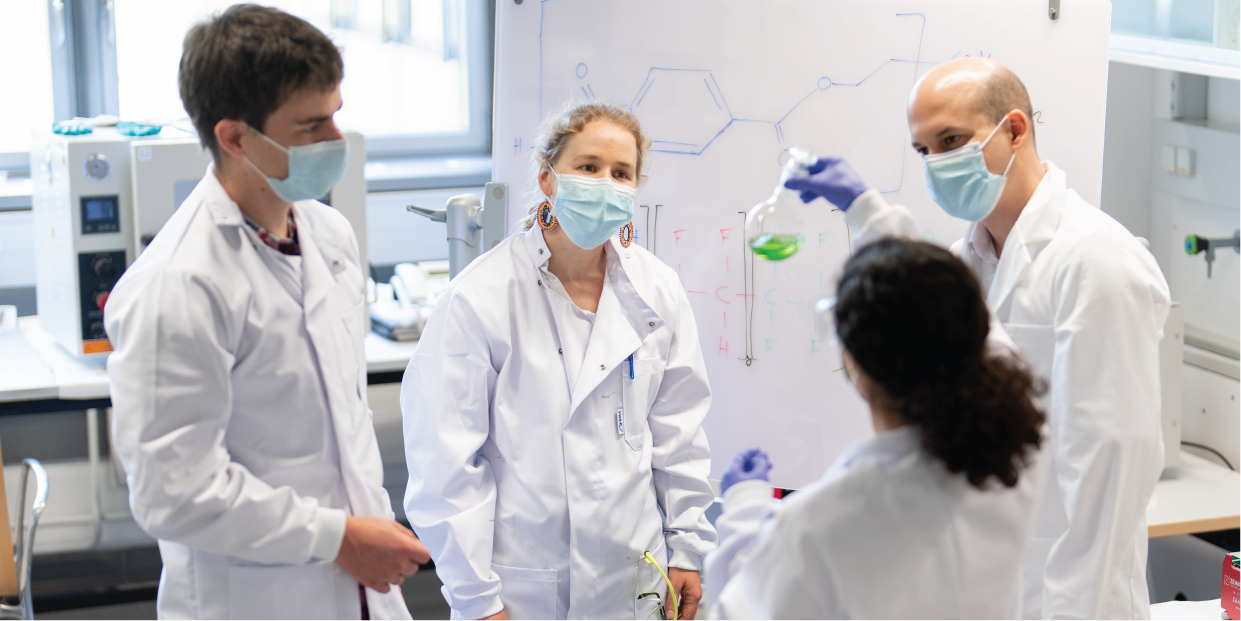
Dr. Alona Shagan explaining the materials properties and synthesis of PVDF-based terpolymers.
Human and animal bodies employ highly-functional, soft-matter-based biological architectures, such as skin, muscle and tendons, and drastically outperform today’s robots in terms of agility and adaptability. Beyond these individual components of the body, it is particularly impressive to observe, how nature has managed to create extremely effective and reliable interfaces between different components with vastly different properties, such as bones and tendons. Intelligent machines of the future that match or even exceed the astonishing capabilities of natural organisms, will need to similarly be built from functional soft materials that combine multiple desirable materials capabilities, that autonomously adapt to environmental changes and that can repair themselves after damage.
From a technological point of view, future human-machine interfaces will need new classes of functional materials that can, for example, provide localized haptic feedback on touchscreens, requiring these materials systems to be transparent, conductive and stimuli-responsive, or that can reliably interface the human brain with electronic devices, requiring bioelectronic interfaces that provide effective and safe long-term connections with nervous tissue.
A further aspect of our research in this field is the sustainability of components used to build intelligent systems, which we aim to realize by developing biodegradable robotic materials -- growing electronics and plastic waste pose environmental and health concerns, and we believe that it will become increasingly important to develop sustainable robotic materials that can be decomposed by bacteria or other living organisms after use thereby avoiding pollution.
Building upon a period of rapid progress in the synthesis and simulation of functional soft materials and in the design and fabrication of complex responsive structures, our department and its collaborators are aiming to devise new types of functional polymers with unusual combinations of properties, such as electrical conductivity paired with stretchability, transparency, biocompatibility, biodegradability, and the ability to self-heal from mechanical and electrical damage.


